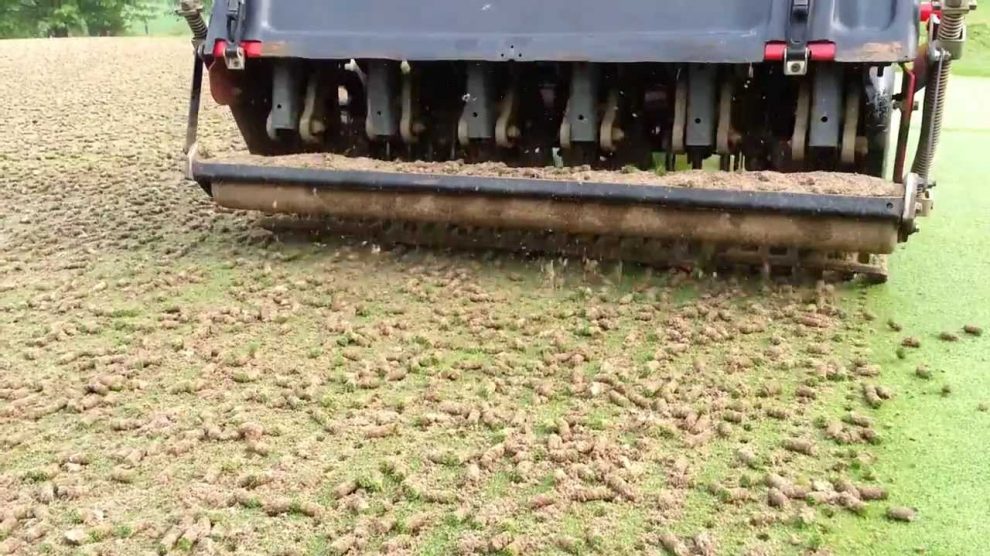A couple of different times each year, you show up to your favorite golf course or your golf club, and you see a sea of holes punched in the ground. You curse to yourself because you know the golf course has aerated.
However, golf course aeration is a good thing, and it helps to keep our golf courses in great shape, even when the weather turns against golf course superintendents.
Aeration is designed to basically let golf course grass breath and stretch out a little bit. It's designed to control what's known as "organic matter," dying grass and grass parts, while loosening compacted soil and allowing water to flow better underground. By having compacted, poor-performing or dead grass parts in the soil, the healthy turf can struggle to grow and develop strong roots. Compacted soil, created from foot traffic, weather and other factors, reduces oxygen levels in the soil and can inhibit water getting to turf roots. All of this compacting and organic matter can also make for a softer golf course because it's unable to drain water and push new turf to the surface.
So, golf course superintendents aerate so you have a better golf course. They can do that with a variety of methods, but the general idea is to either make punch marks in the soil with rolling spikes or using equipment to create varying size soil cores that are pulled out of the ground. These holes allow for excess moisture to evaporate and better chemistry in the soil to promote healthy turf growth.
Superintendents don't always aerate the same areas. Sometimes, they do greens, others tees, and sometimes still, fairways. They can do a combination. They could stagger the approach. That is left to the superintendent, whose job it is to figure out what gets aerified and when and using what method.
Aeration schedules and timing can vary around the country, as well course to course, depending on the soil, the traffic, the cost, the kind of grasses used, weather and more. Many golf courses will aerate two or three times in a given year. However, aeration is only done when turf is healthy and actively growing, so as to promote a speedy recovery.
For grasses like bentgrass and Poa annua, core aeration is best done in the spring and fall. For heat-tolerant
grasses such as bermudagrass and paspalum, core aeration is best performed in late spring and throughout the summer. However, you'll also notice that most superintendents fertilize the turf before aerating, adding to a headache for players because the greens are often soggy and spongy before the tines come in to punch holes.
The aeration holes are then filled with topdressing -- typically sand -- and usually hit with the sand a second time after the first filling settles into the core holes. It usually takes a golf course two weeks to recovery from properly done golf course aeration.
Once the grass grows back through the aeration holes to a healthy level, the mowers and rollers come back, typically with greens as good as new.

